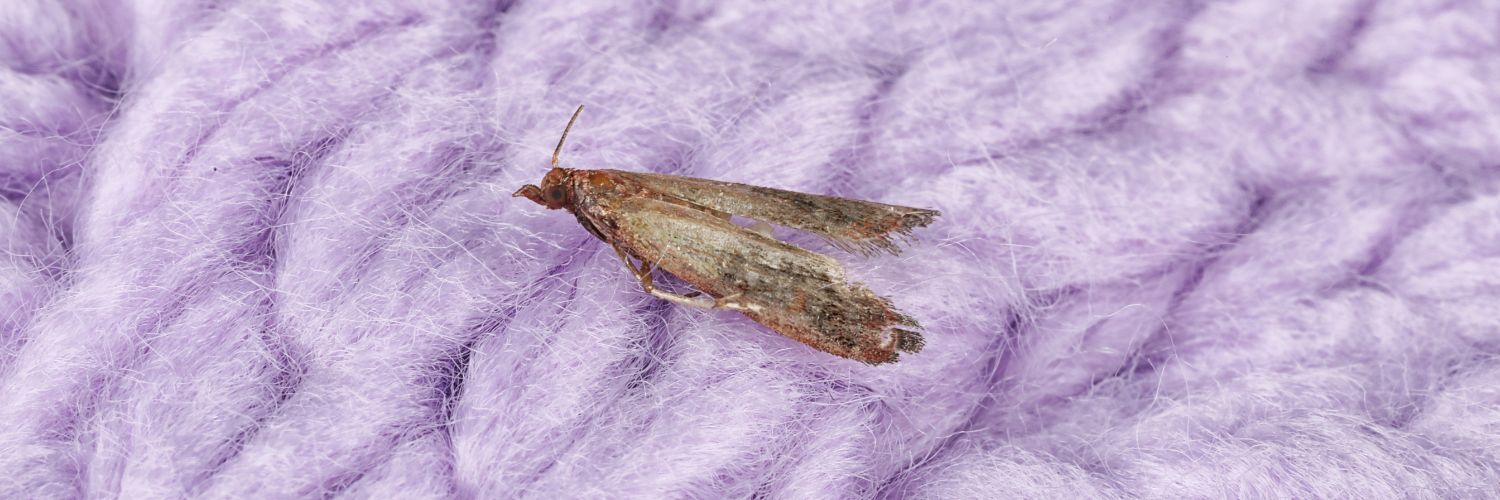Clothing moths are small, unassuming insects that cause tremendous damage to natural fiber fabrics, such as wool, silk and fur. These destructive scoundrels instinctively flock to said materials because they provide a source of nutrition for their larvae, which feed on the keratin found in these fibers.
But there’s plenty of hope for humans to win the battle against both case-bearing and webbing moths—the two most common types of clothing moths. With practical, proactive decision-making, you can keep your sweaters, scarves, rugs and more both hole-free and moth-free.
What is cedarwood?

Cedarwood is a versatile and durable domestic hardwood. Because it is naturally resistant to both rot and insects, and also gives off a pleasing scent, cedar has many applications. There are a few dozen types of cedar trees that grow all over the world, particularly including the Eastern Red Cedar (Juniperus virginiana).
What makes the Eastern Red Cedar great?
The Eastern Red Cedar, known for both its beauty and its strength, is a very abundant natural resource in North America. It is native east of the Great Plains from southeastern Canada to the Gulf of Mexico. Due to both its profusion and its management against a number of pests—including the web-spinning moth and the case-bearing moth—Eastern Red Cedar serves as a choice renewable natural resource. It is an environmentally-friendly natural pest management tool that is yet underutilized.
What does Eastern Red Cedar oil do to clothing moths?

Cedarwood contains natural oils that give off a trademark scent. These oils—which contain a wide variety of hydrocarbons, including cedrol and thujopsene—give cedar its distinctive earthy and pleasant smell and, through their emission, ward off pesky insects. Together with acids, they act as a natural pesticide.
When clothing moths are exposed to cedar, the aforementioned hydrocarbons are absorbed through holes—called spicules—in the sides of their bodies, routing the hydrocarbons directly into their tracheae where they affect internal tissues.
The hydrocarbons and acids released are highly damaging to the clothing moths.
- They disrupt their reproductive cycles.
- They derange their developmental cycles.
- They cause nerve damage.
The oils used are a carefully selected blend of the bark, the wood, the leaves and the branches of the Eastern Red Cedar, ground down and steam distilled.
Can you use Eastern Red Cedar as a natural moth repellent?
Eastern Red Cedar is a phenomenal natural moth repellent. My only quandary in developing a cedar product was amassing how to best get this cedar into our homes, as I put great weight in the artistic look and the feel of all of my products, asking myself if they’re aesthetically tasteful and classy.
The result of this endeavor is Cedar Planks. These meticulously designed, highly aromatic planks are meant to be tucked away with your precious keratin-rich fabrics or hung—as attachable hangers are also included—next to your valuable wool garments. They will keep clothing moths from laying their eggs on your precious fabrics. They will also prevent young larvae from venturing near these materials. Clothing moths, my friends, are repulsed by the smell of cedar. (You, on the other hand, will be delighted—as your wardrobe will remain hole-free and aesthetically pleasing to behold.) Hold security in the palm of your hand and then place it in your drawers and hang it in your closet.
What if I already have clothing moths? How do I get rid of them?

Don’t lose hope. As soon as you are able to clearly identify that you have clothing moths, whose existence is both on the rise and presents a greater threat than ever before, you can begin the getting-rid-of-clothing-moths process.
Male clothing moths are attracted to pheromones. Female clothing moths release these species-specific odors with properties of hormones, which signal their physical state and attract their male counterparts. When you place clothing moth traps within the vicinity of moth activity, you will begin to eradicate your moth issue, as the male moth population will be lured and their existence, ended. Our clothing moth traps include the strongest pheromone attractant and the stickiest glue.
Of course, you must do more than just set up traps. Here are the necessary steps:
- Identify your moth species. Make sure that the holes in your fabrics are not caused by carpet beetles.
- Toss infested items. If the items carry sentimental value, this may be gut-wrenching. Remember that, in doing so, you are being proactive and preventing this moth infestation from continuing.
- Clean, clean, clean. This is done in two parts: First, wash, steam, dry clean, or freeze your clothes. Second, thoroughly clean your closet. Use Six Feet Under, as you want your cleaning to be scrupulous.
- Place moth traps. Maintain a toxin-free environment and do not use moth balls.





















